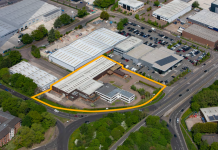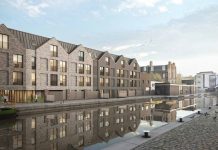In response to Cabinet Secretary John Swinney announcing the first Scottish tax rates in more than 300 years, Doug Smith, Scottish chairman of leading property consultancy CBRE, has prepared the following commentary.
It seems that Scotland has been on the cusp of history a few times this year, but today marked an occasion when history was indeed made. For the first time since the Act of Union in 1707 more than 300 year ago, Scotland has set the bands and rates for a new tax – Land and Buildings Transaction Tax (LLBT) – which will replace Stamp Duty Land Tax (SDLT) next year. Alongside Landfill Tax, this is the first tax to be levied and collected in Scotland.
In itself, this announcement may appear to have little significance beyond those having an interest in the Scottish property market whether as home owners, investors or occupiers. With wider devolved powers en-route to the Scottish Parliament following the NO vote last month, this is the first time that we can see how the current Scottish administration might seek to apply such powers.
SDLT rates are at present consistent across the UK and the tax operates on a “slab” basis. That means that different rates are applied to different values of transactions, but when the price of a transaction enters into a higher band then the whole of the price, not just the proportion in that band, is taxed at the higher rate.
So today’s announcement by the Cabinet Secretary will see two fundamental changes introduced from April next year.
First, LBTT will be a progressive tax. Tax will be paid on each band to the extent that the price or consideration falls within any band. A little bit more mathematics required for the calculation, but in itself not a major change.
Where there has been a greater change is in relation to both band and rates. For some time the stated objectives of Scottish Government have been (i) to see the changes as neutral in terms of tax revenues and (ii) to provide some benefit to first time home buyers and small businesses.
The benefit comes at a cost and this cost will see a higher tax burden falling on larger transactions both commercial and residential.
In commercial terms this means that all sales, or transactions at a price of more than £350,000, will be captured by the 4.5% upper tax bracket. The “tipping point” we estimate will be around £383,000, with properties above this price carrying a higher tax burden and those below benefitting from a reduced tax liability.
The valuation of commercial property responds quickly to such changes and on a very simple analysis the value of these properties will reduce by the amount of the increased LBTT burden impacting, amongst other things on investment performance and perversely on LTV’s for lenders, at a time when exposure to commercial property for banks was beginning to improve.
The vast majority of institutional investment stock in Scotland will have a value substantially greater than the £350,000 threshold so in practice the value of these properties will fall by an amount approaching 0.5%.
This will place Scotland at a relative disadvantage when compared to other areas of the UK where the previous rates will continue to apply based on current policies.
Is the extent of the disadvantage sufficient to dissuade investment? Probably not, but it may raise in the minds of investors and others how the Scottish Government might approach other areas of taxation that could be included in the wider Devo Plus settlement.
Can the property sector afford this extra burden? Well it will have no choice but to do so and for a £10 million transaction the additional cost will be approaching £50,000.
It is interesting that a similar additional burden will apply to a house costing around £1,200,000 meaning that the residential sector is taking a proportionately larger share of increase on a property by property basis albeit the overall volume in each sector is different.
The test will be whether, for larger commercial projects, this slight extra burden stifles what is only a very fragile recovery in the development markets. Most likely not but it does not make the challenge any easier.




















